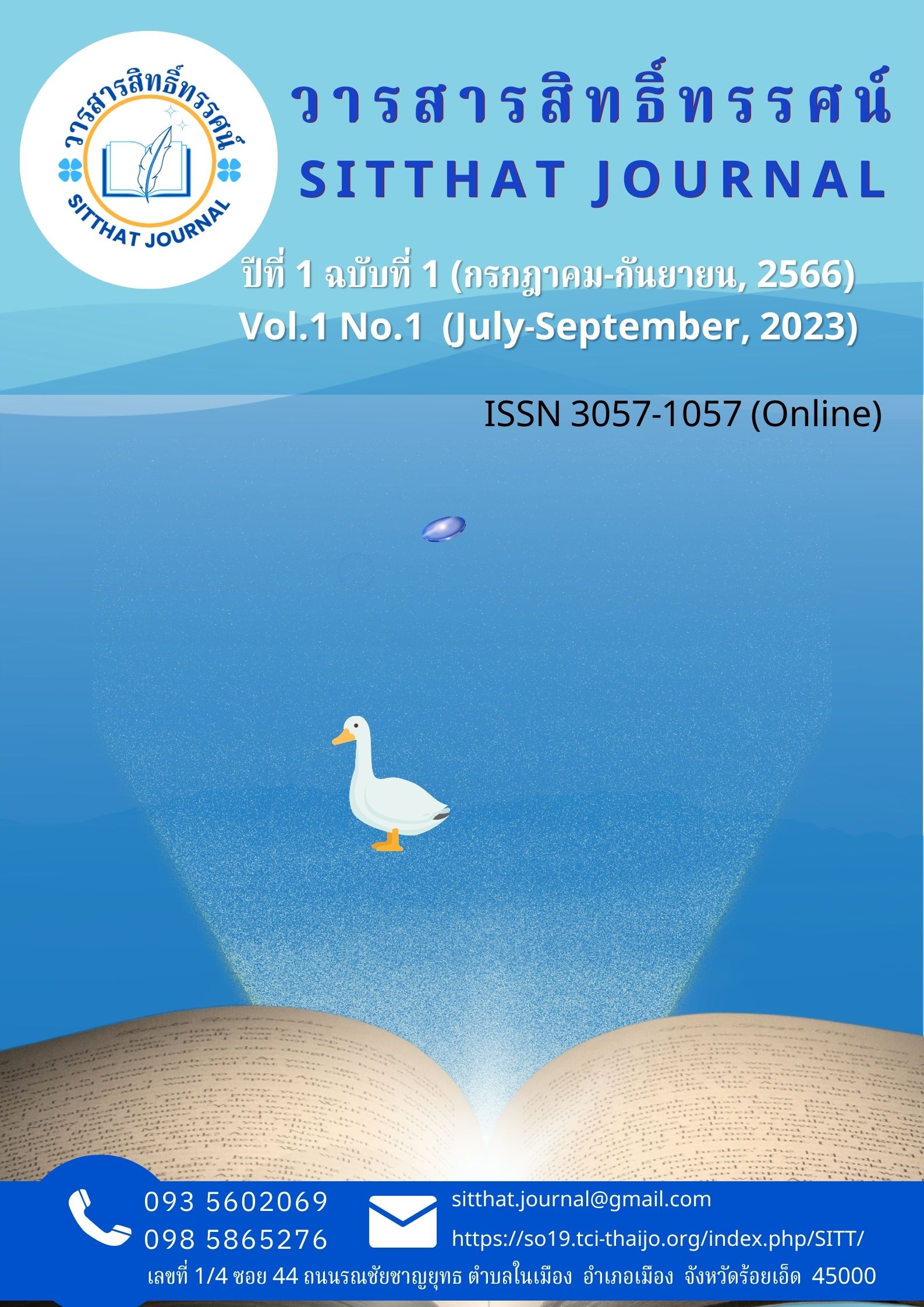MORLAM AND PERFORMANCE EVOLUTION
Main Article Content
Abstract
Mor lam is considered a form of performance that has been popular for a long time and has been adjusted to keep up with the changing social trends in terms of creating modernity, lighting, sound, stage, and lead singers of each band to create a trend that people continuously watch and follow through various media Morlam also demonstrates the ability to adapt to modern society while maintaining strong Isan cultural roots. The income of a Morlam troupe comes from performing at festivals, commercial events, ticket sales, sponsorships, and media productions. The expenses of a Morlam troupe include stage rental and sound and lighting equipment, travel expenses, performer and crew salaries, costume expenses, and advertising. A large and well-established Morlam troupe may have a good income and can easily cover its expenses, but a smaller Morlam troupe may need to manage its expenses more carefully in order to continue operating sustainably.
Article Details

This work is licensed under a Creative Commons Attribution-NonCommercial-NoDerivatives 4.0 International License.
บทความนี้
References
คำพูน บุญทวี. (2525). วัฒนธรรมหมอลำในภาคอีสาน. กรุงเทพฯ : สำนักพิมพ์มหาวิทยาลัยธรรมศาสตร์.
นิตยา กาญจนะวรรณ. (2540). บทบาทของหมอลำในวัฒนธรรมอีสาน. ขอนแก่น : มหาวิทยาลัยขอนแก่น.
ประคอง นิมมานเหมินท์. (2550). การปรับเปลี่ยนของหมอลำพื้นบ้านสู่หมอลำซิ่ง. กรุงเทพฯ: สำนักพิมพ์มหาวิทยาลัยธรรมศาสตร์.
สุรินทร์ สุขวัฒน์. (2551). หมอลำกับสังคมไทยในอดีตและปัจจุบัน.ขอนแก่น : มหาวิทยาลัยขอนแก่น.Barendregt, B. (2014). Popular Music in Southeast Asia: From Mor Lam to Global Pop. London: Routledge.
Greene, P. D. (2001). Thai Northeast Folksong: Exploring Mor Lam’s Impact on Cultural Identity. New York: Oxford University Press.
Meyer, C. (1997). Folksongs of Northeast Thailand: A study of Mor Lam. Bangkok: White Lotus Press.
Wong, D. (2004). Sounding the Center: History and Aesthetics in Thai Buddhist Performance. Chicago: University of Chicago Press.


